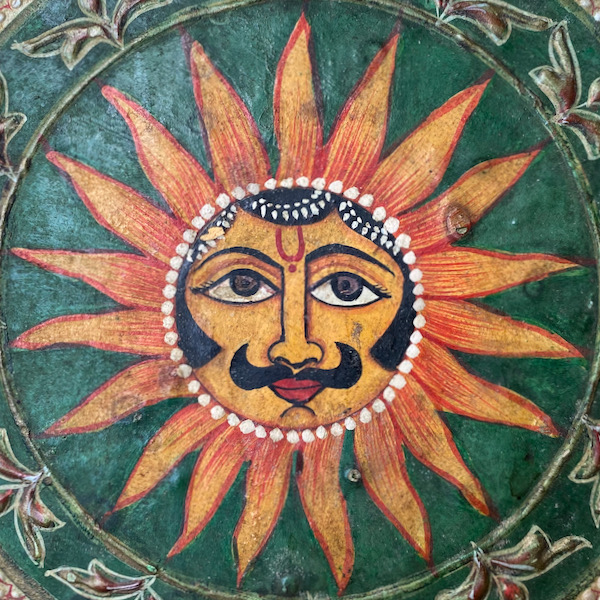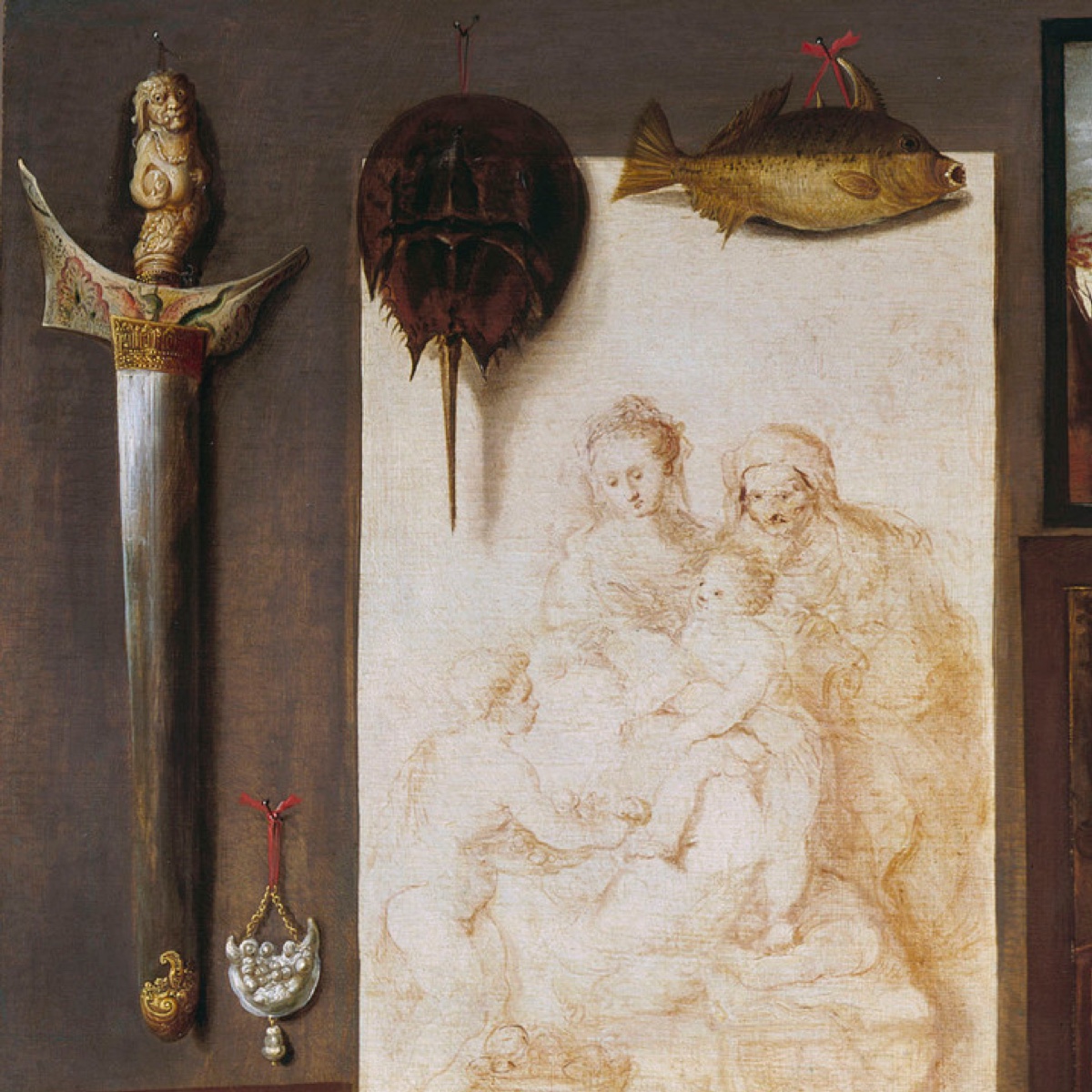
Asian arms in Dutch master paintings
Dutch masters' fascination with exotic Asian wares shown in a series of paintings.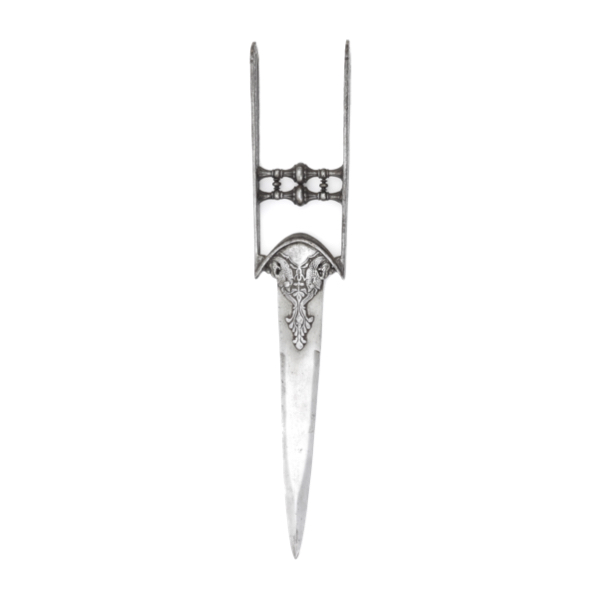
Southern katar with yali langets
Of a style often associated with Tanjore, the seat of the Vijayanagara empire.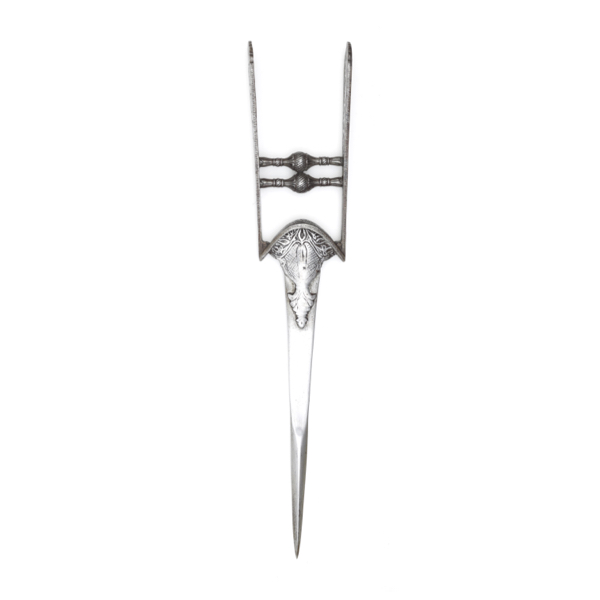
Southern katar with thick point
The blade with an extremely thick point on a very thin blade.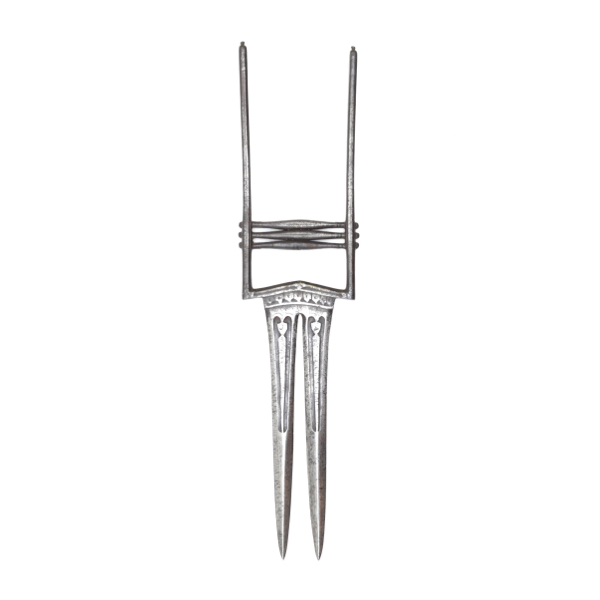
Double bladed katar
Also called jamdhar doulicaneh. Forged from a single piece of steel, complete with scabbard.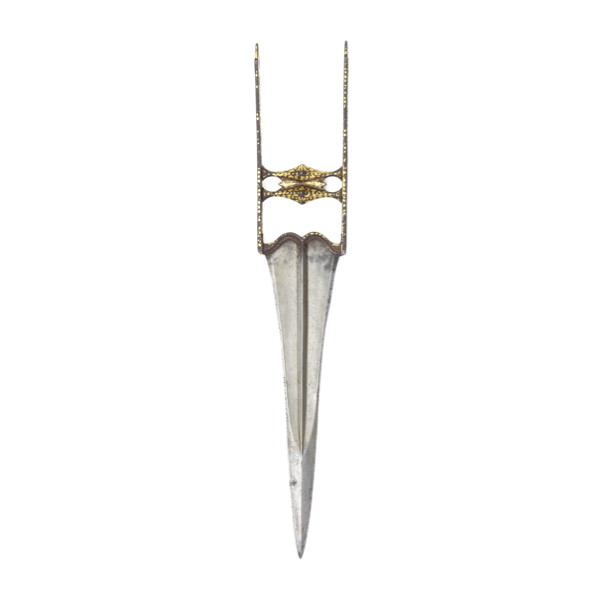
Northern wootz katar
With different types of decor on either side of the hilt.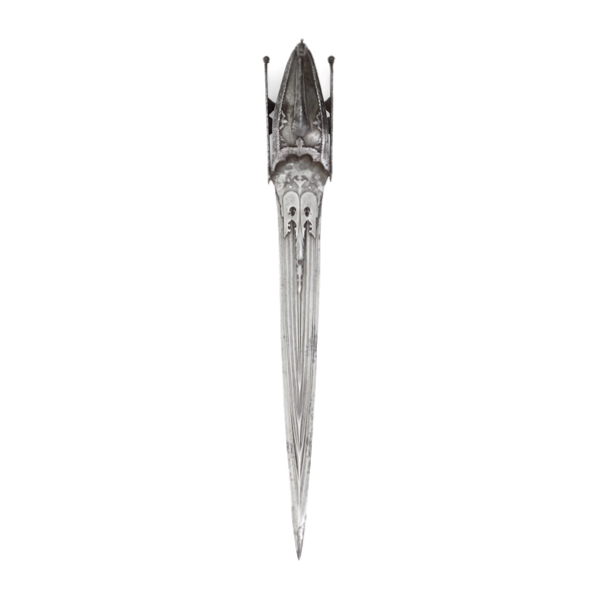
Vijayanagara hooded katar
With crisp, extremely very well-preserved wootz blade.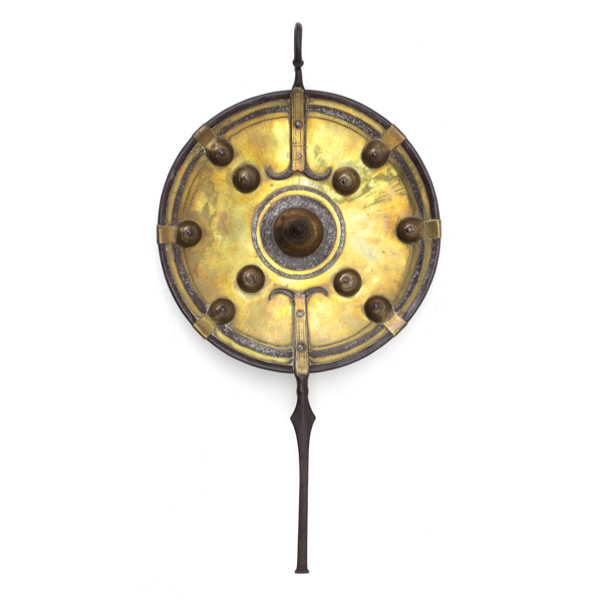
Rare Santali shield
Peculiar shield with catching hook, used by the Santali people of Bengal.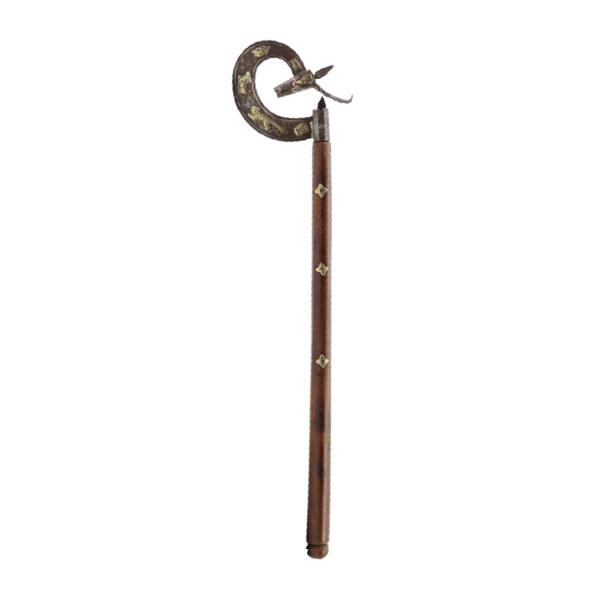
Indian Antelope Axe
An enigmatic type of axe, this one probably from tribal north India.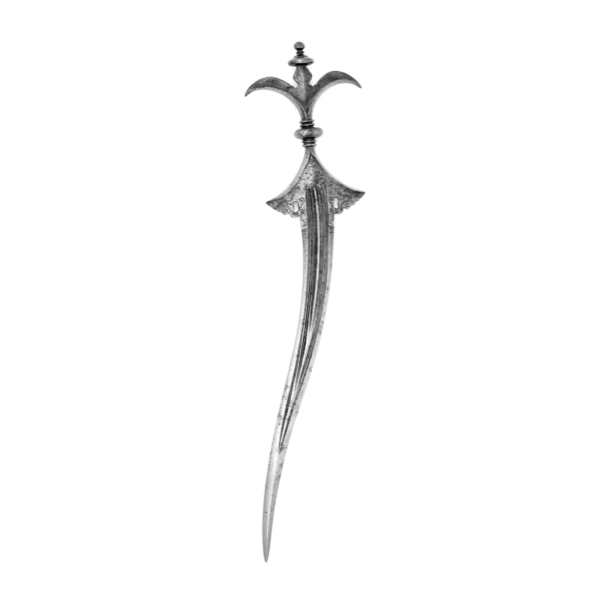
Slender chilanum dagger
Of elegant form with very crisp blade.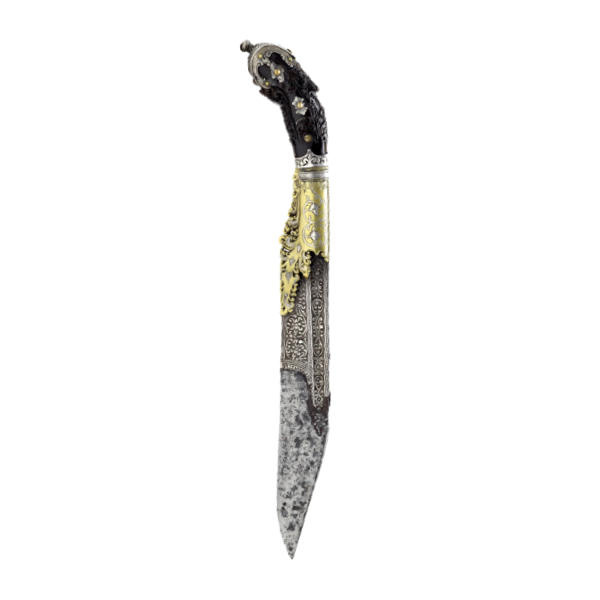
Sinhalese pihiya
A beautiful black coral hilted example, made in the King's workshops.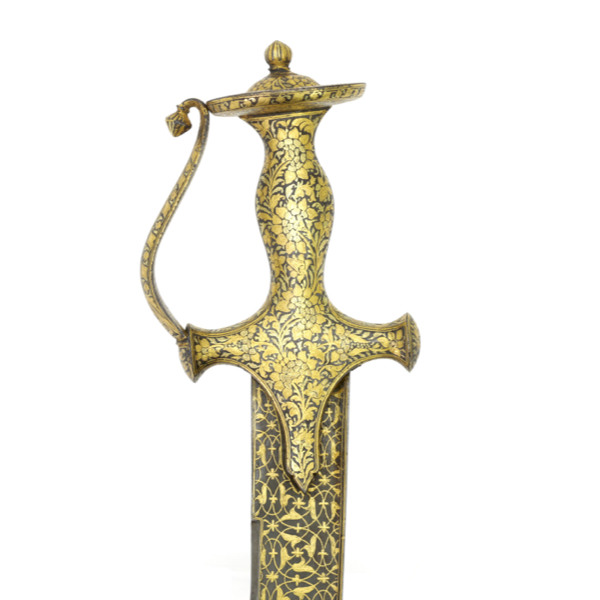
Sosun pattah with twistcore blade
The hilt with overlay of the finest quality of the period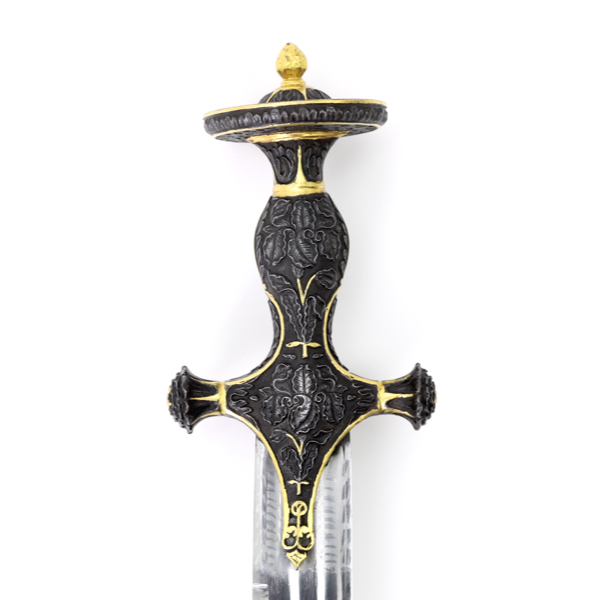
Talwar with 1693 dated blade
With later, elaborately chiseled hilt of very fine quality.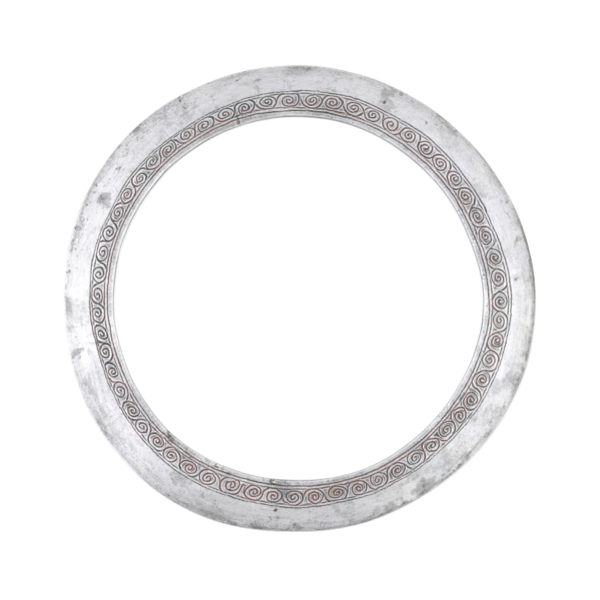
Sikh fighting chakram
A sharp, heavier user. Not the flimsy type usually encountered.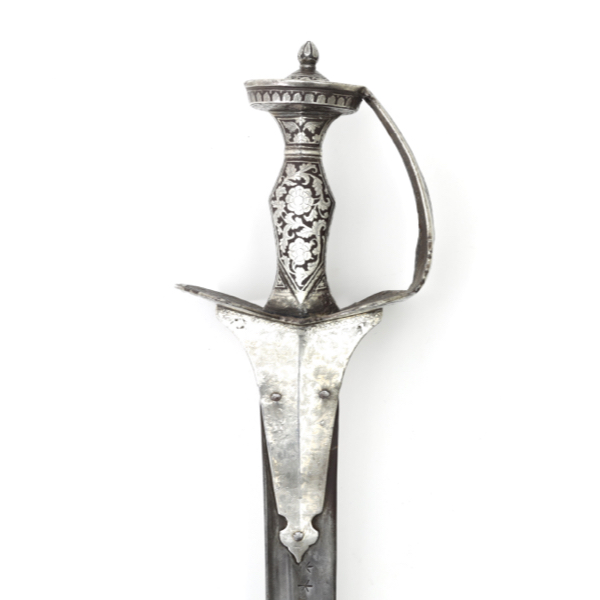
Deccan firanghi with silver overlay
The basket hilt is elaborately overlaid with silver in floral designs.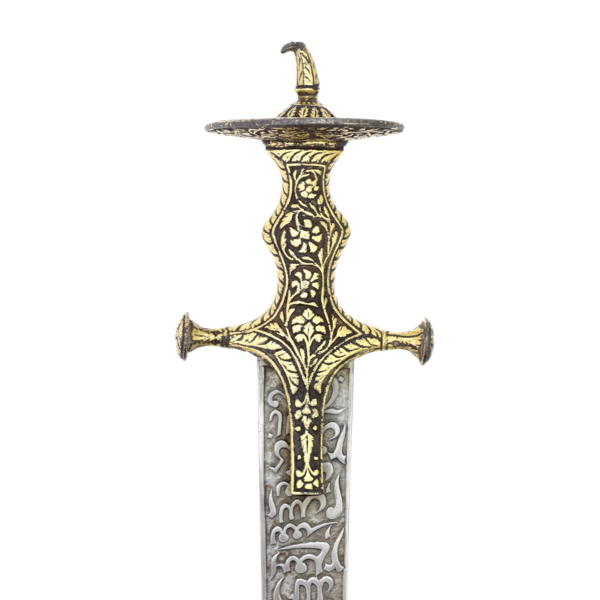
Interesting kirach with dated hilt
Mentioning the son of a Maharajah and a year corresponding to 1887 A.D.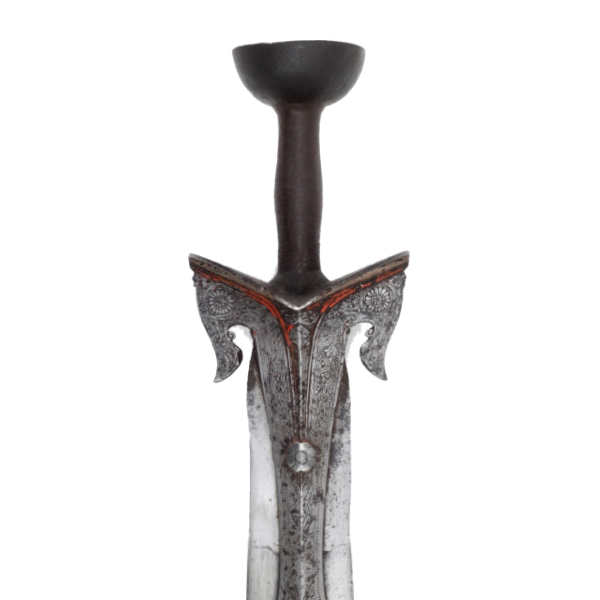
Fine 17th century pattissa
The enormous blade made of fine, boldly contrasting wootz steel.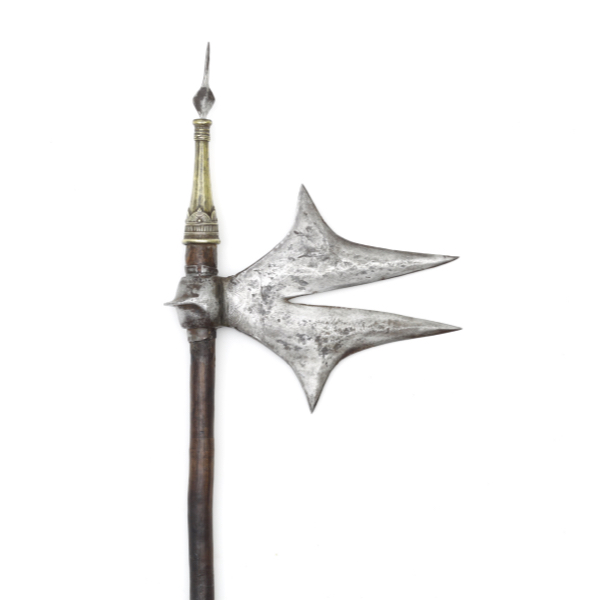
Rare bifurcated Khond axe
Very rare subtype of a Khond tribal axe with double points.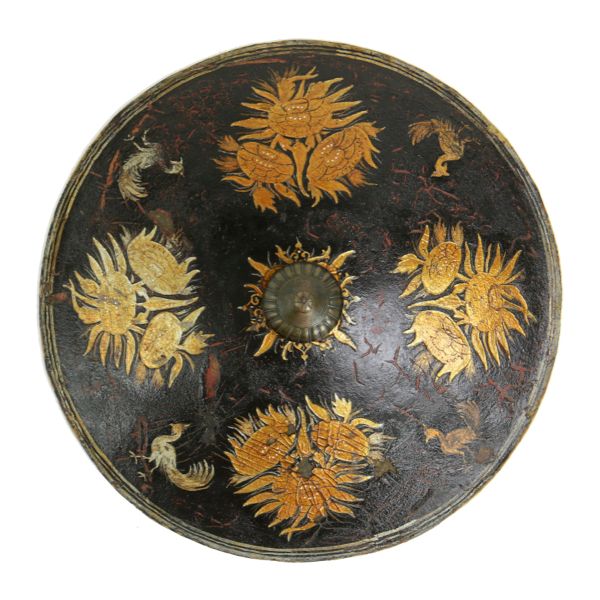
Early Indian shield
Made of thick lacquered hide, with a single brass boss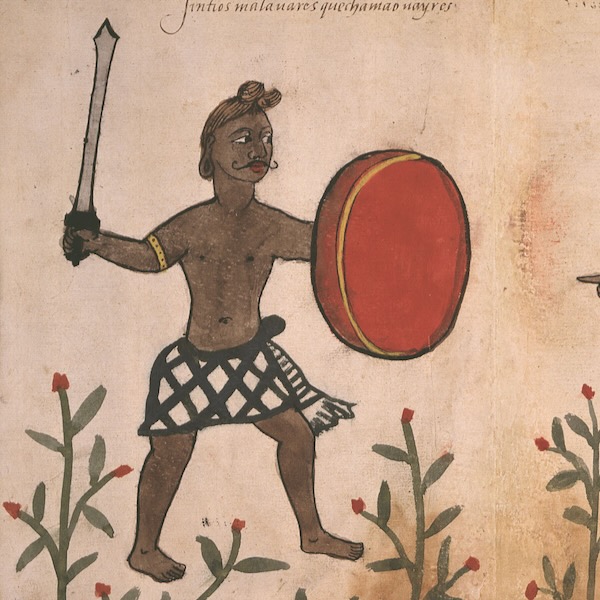
Nayar
An Indian group of castes. Historically warrior castes.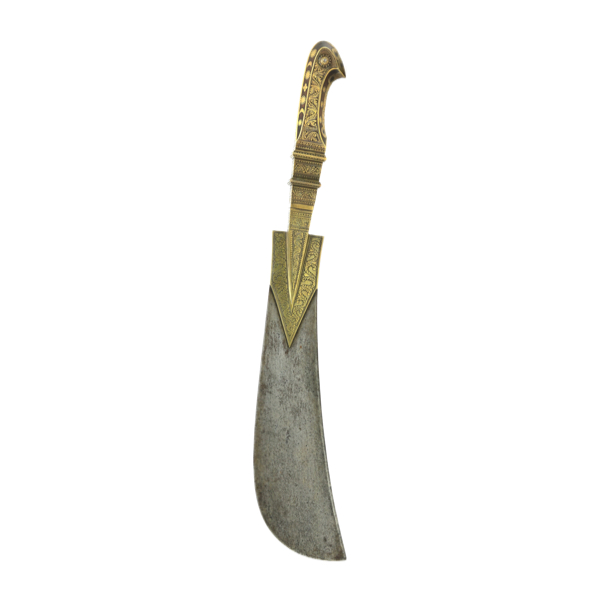
Malabar coast Moplah sword
A fine and somewhat unusual specimen, with engraved brass mounts and hardwood grip.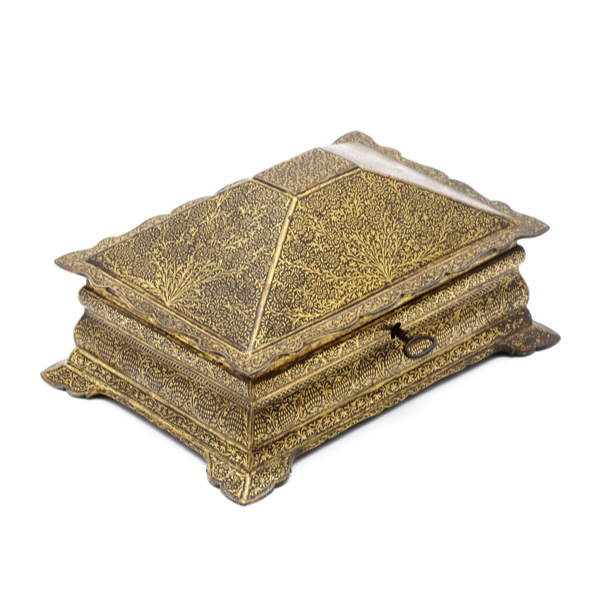
Punjabi koftgari lockbox
Iron lockbox with key, decorated with the gold koftgari normally seen on arms.
Moplah (sword)
Sword of the Mapilla Muslims of the Malabar Coast, South India.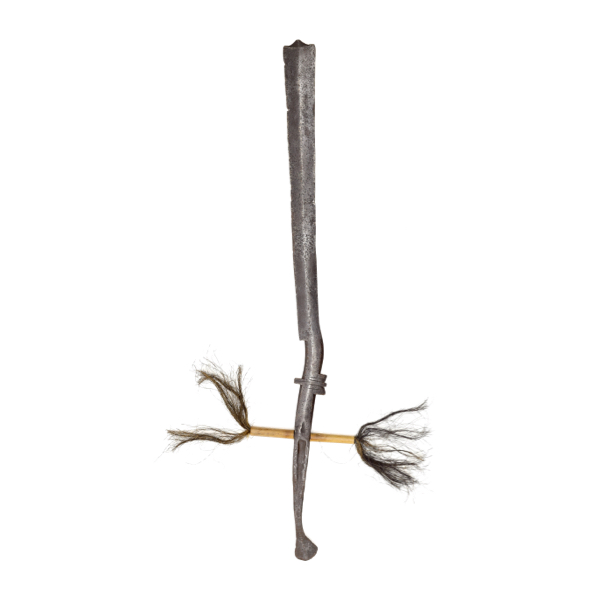
A milam of the Garo
This peculiar sword was used by the Garo people of Assam for fighting, clearing the jungle, and animal sacrifices.
Milam
A peculiar double-edged sword of the Garo people.
A Khasi dao
These mysterious weapons were already obsolete when the first ethnographers encountered them.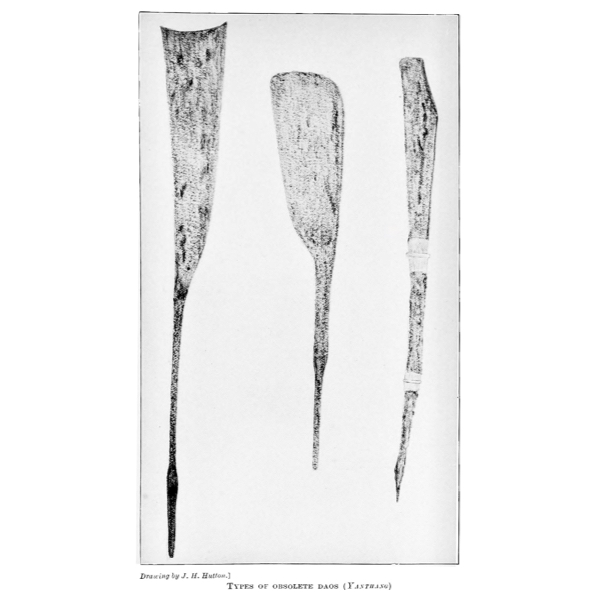
Yanthang
Lotha Naga word for a group of large obsolete dao used in ceremonies.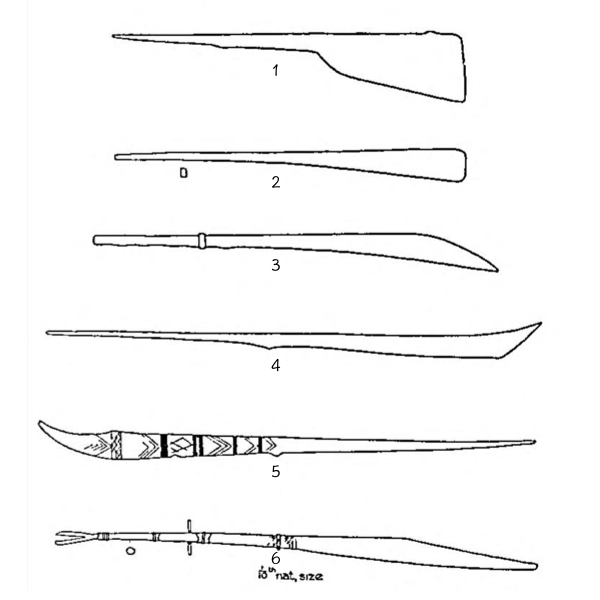
Noklang
Ao Naga word for a number of large, archaic swords used in ceremonies.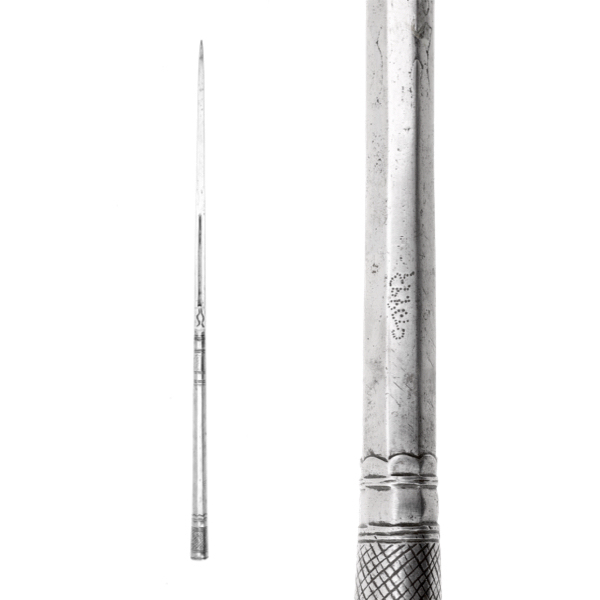
Bikaner lance head
With square cross-section point and several Bikaner armory markings.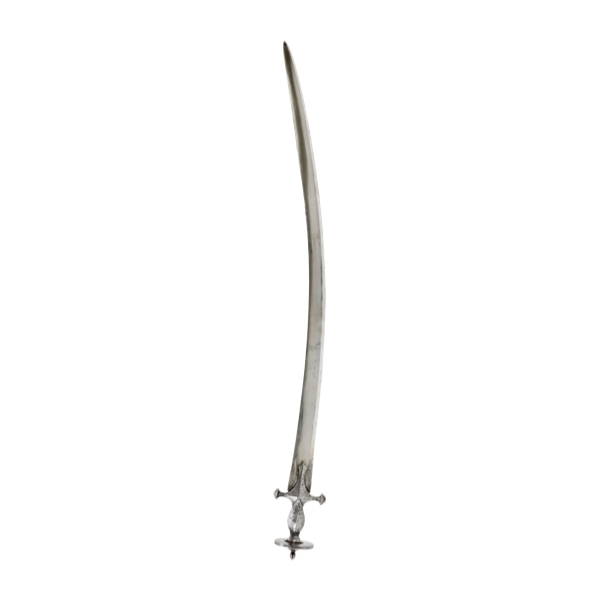
Sirōhī (सिरोही)
A town in Rajasthan known for its blade making industry, as well as a type of sword.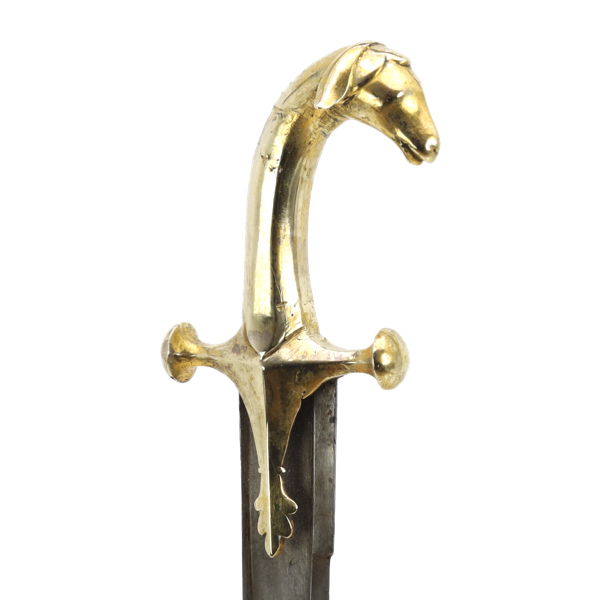
Goat hilted Khyber sword
With gold plated hilt and pattern welded blade.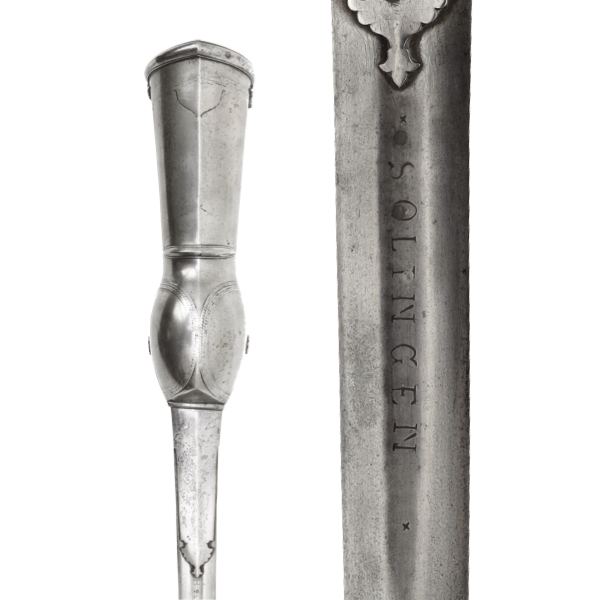
Solingen blade with pata hilt
Indian gauntlet sword with German blade made in Solingen.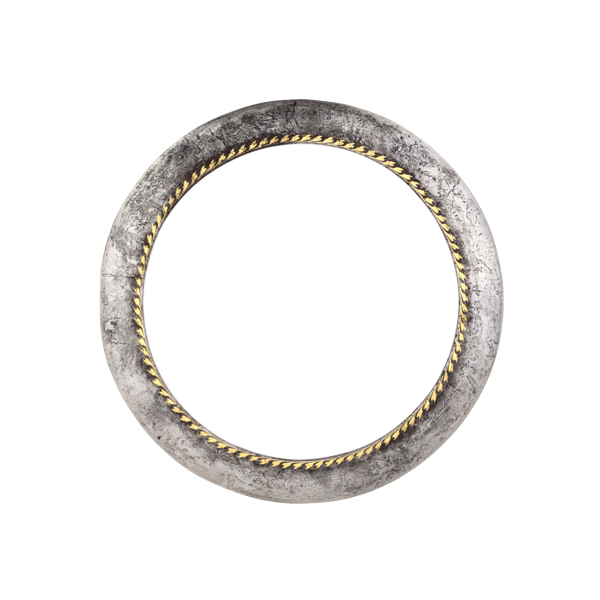
Heavy Sikh chakram
Traditionally associated with Vishnu, it was an essential piece of equipment for the Sikh nihang.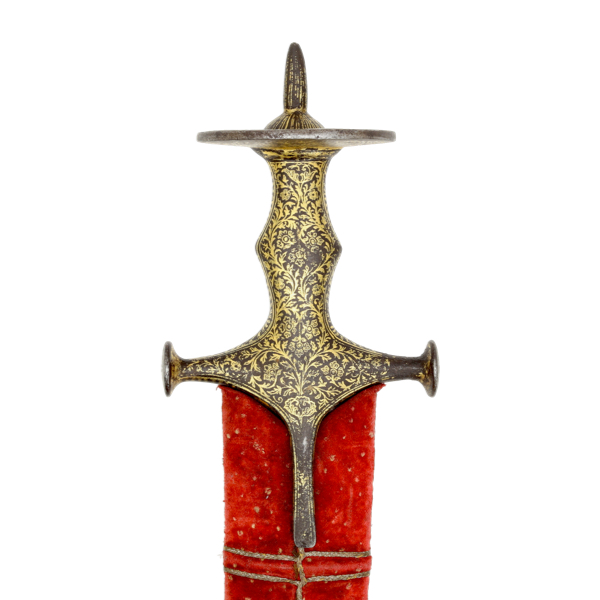
Rajput sosun pattah
With wootz blade, Marwari style hilt, and its original red velvet scabbard.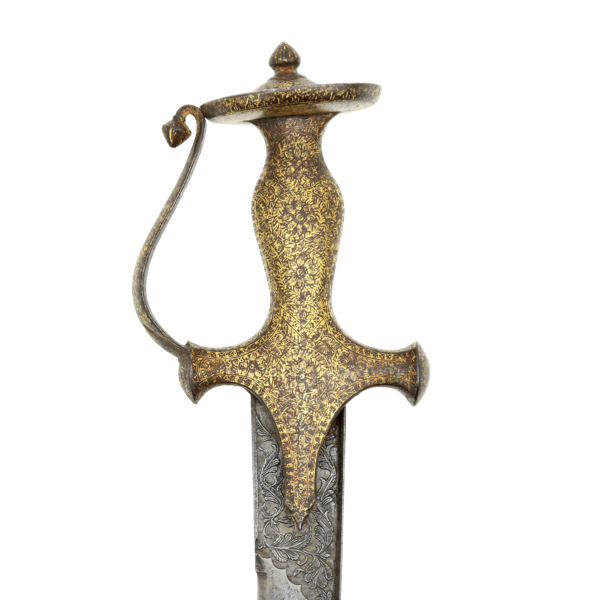
Sosun Pattah
With Persian wootz blade, engraved at forte with floral designs.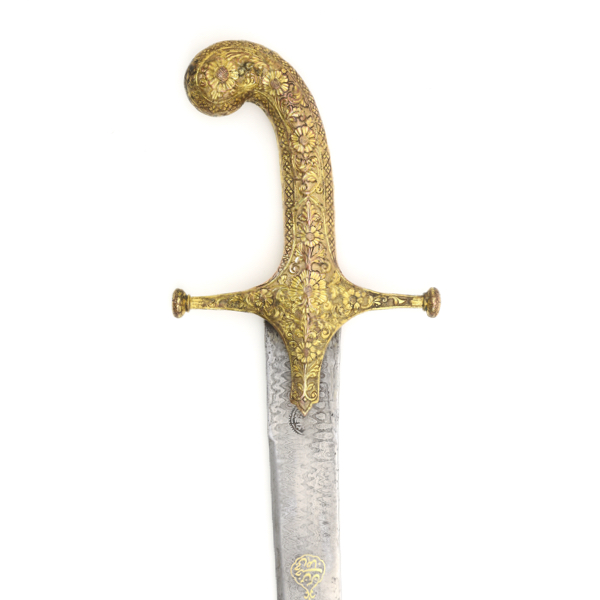
Kutch shamshir for Benson
Blade of Persian shamshir form, but of Indian make. Mounts in Kutch style gilt copper.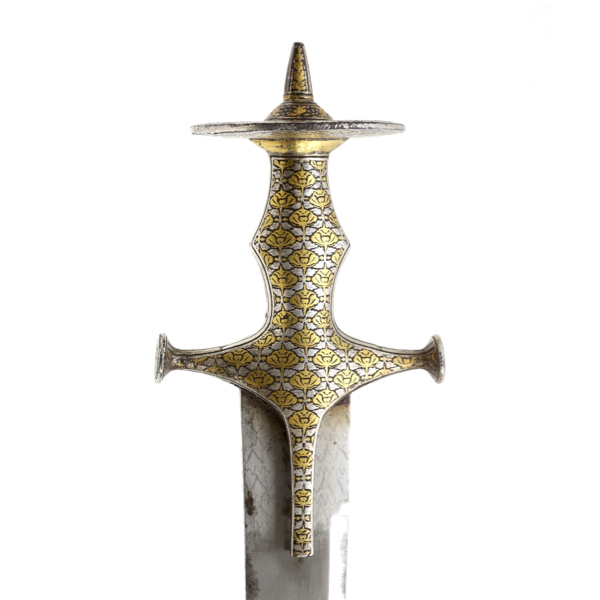
Talwar of Mohta Bakhtawar Singh
A fine Marwari talwar presented to the Dewan (chief minister) of Bikaner in 1756 A.D.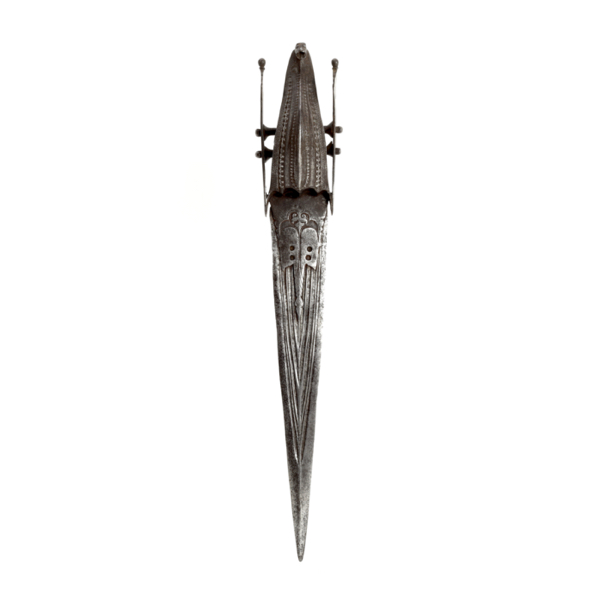
Vijayanagara katar
A 16th hooded katar with the wide, ribbed blade that is characteristic for this period.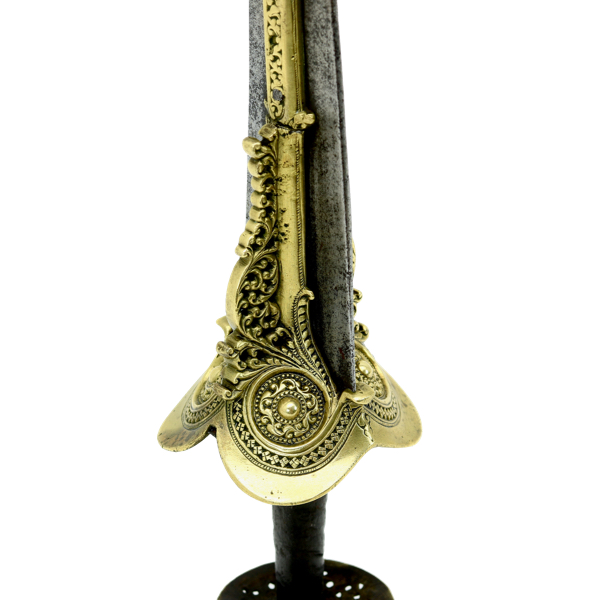
Nayar ritual sword
An unusually ornate iteration of the design, intended for Hindu ceremonies.
South Indian pattisa
An early example, late Vijayanagara empire, with a fine wootz spatulate blade.
Paṭṭiśaḥ (पट्टिश)
Language: Sanskrit
Origin: Dhanurveda of circa 1100-800 B.C.
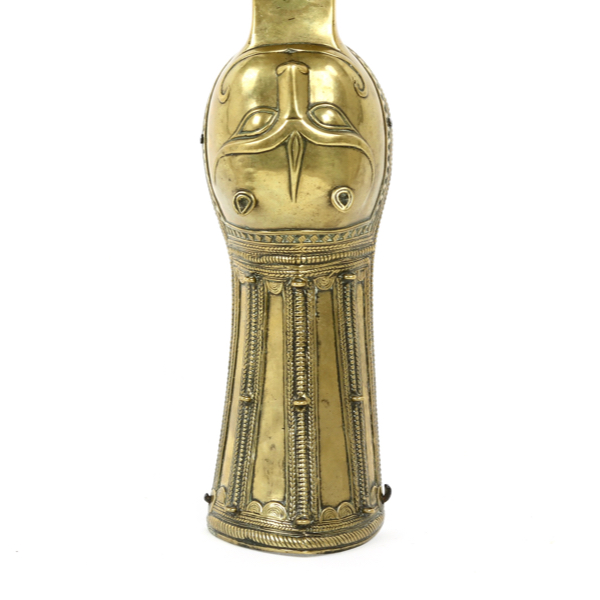
Boy's brass hilted patá
With a charming brass zoomorphic gauntlet with feline head.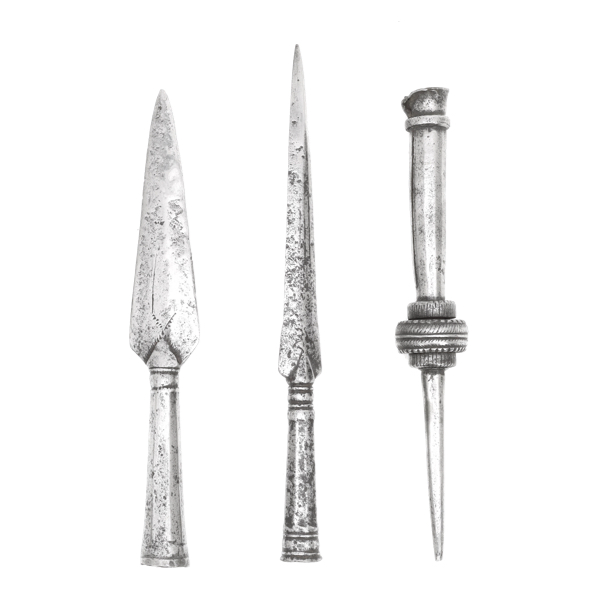
Indian spearheads and butt
A set for the beginning collector.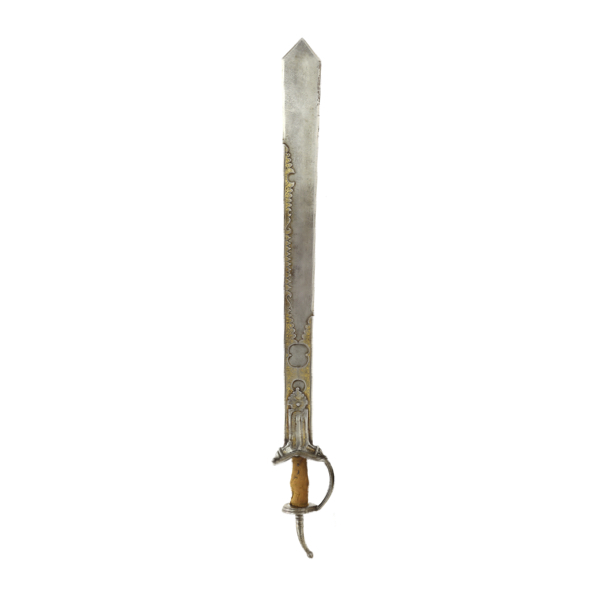
Khanda with etched blade
A 19th-century type with an etched blade, simulating patterned steel.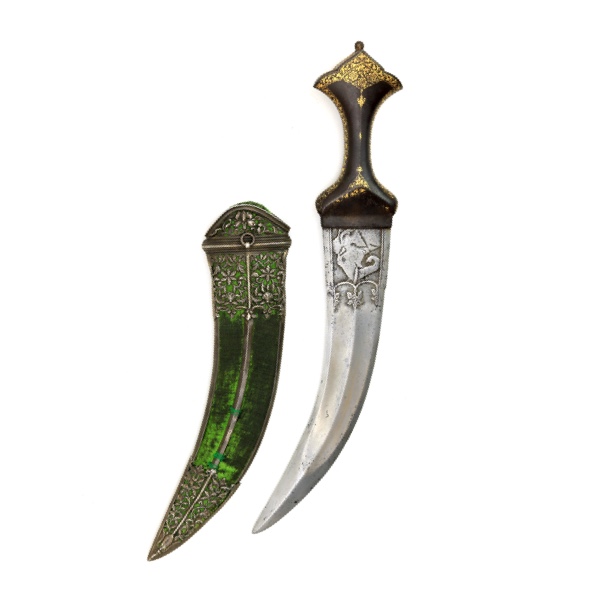
A fine north Indian dagger
Of jambiya form, with pattern welded blade and fine silver scabbard mounts.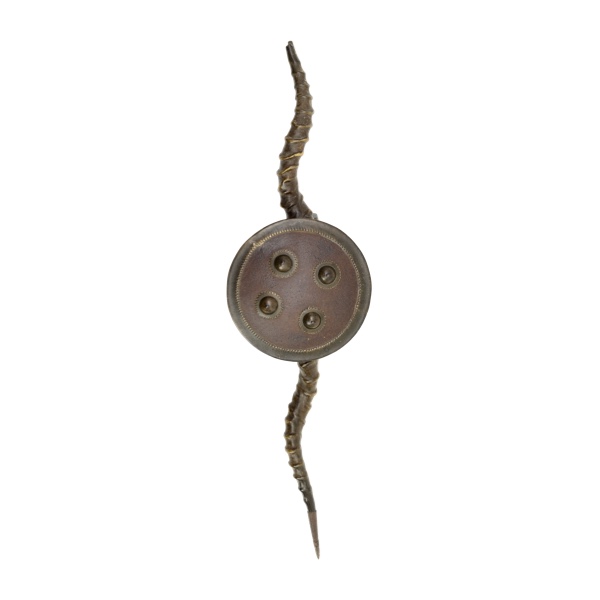
Indian madu parrying weapon
Made with two antelope horns and an iron shield.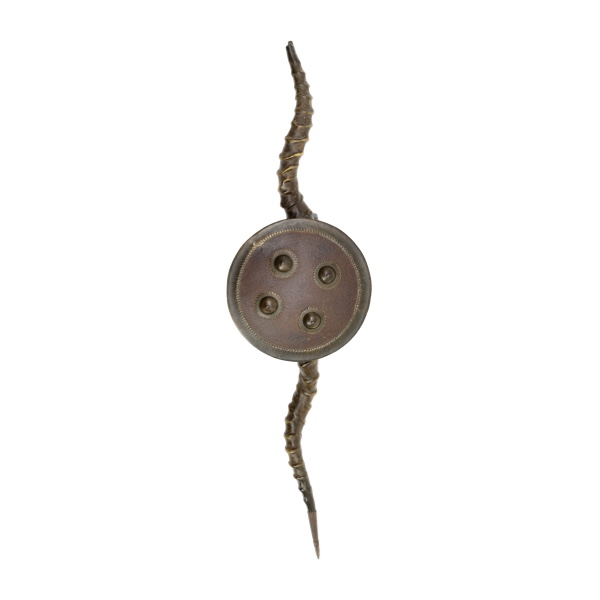
Māḍū (माडू) (Márú / Maduvu)
Marathi word for a parrying weapon consisting of two antelope horns.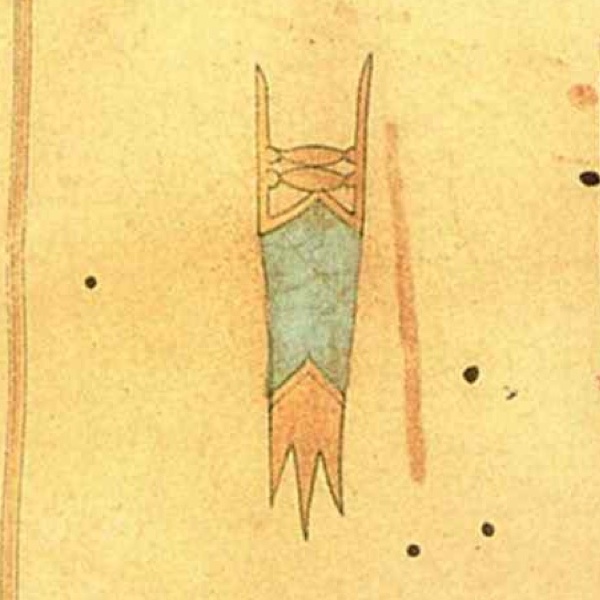
Jamdhar sehlicaneh
A triple-pointed push dagger.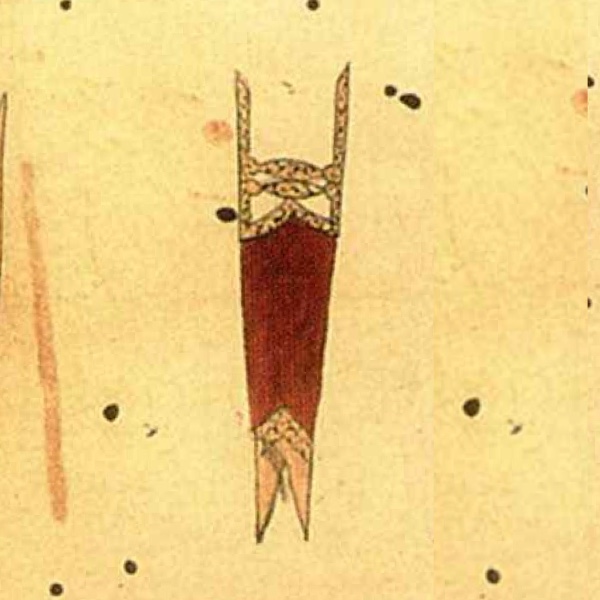
Jamdhar doulicaneh
A double-pointed push dagger.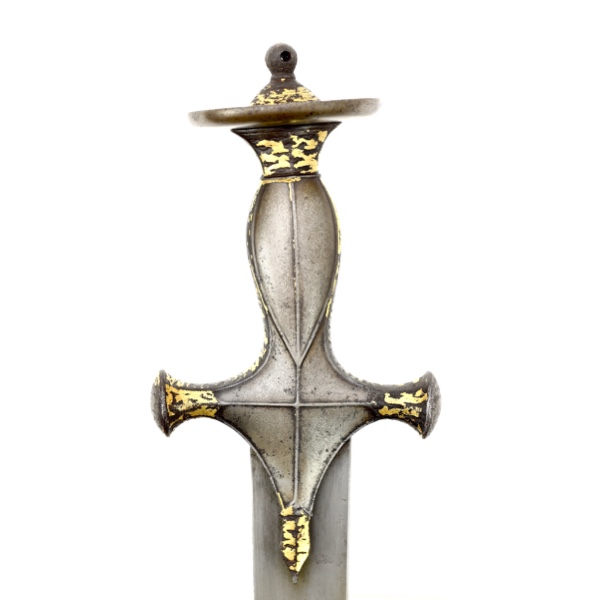
Talwar with wootz hilt and blade
With Persian style blade, showing Indian workmanship.